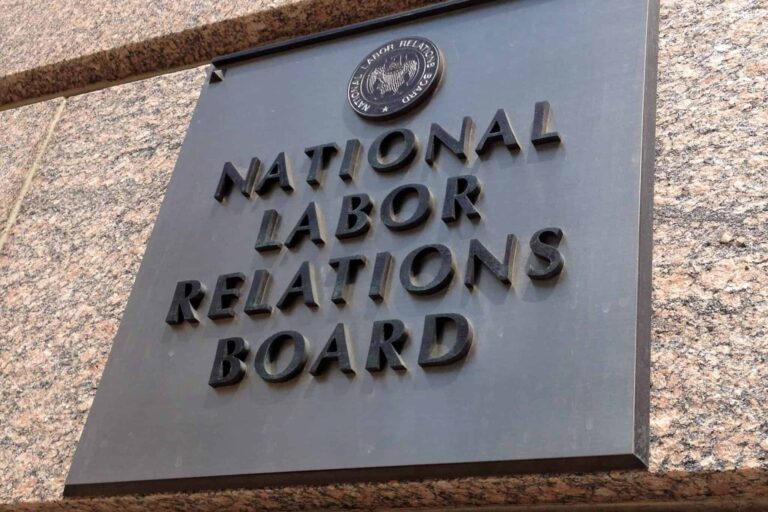Matthew Bodie is the Callis Family Professor at Saint Louis University School of Law and a former field attorney with the National Labor Relations Board. This post is the first in a three-part series.
When James Damore wrote his internal memo against Google’s diversity policies, was he making an impassioned plea on behalf of politically and ideologically charged ideas? Calling on his fellow workers to fight for changes to company diversity policies? Taking a stand against HR practices that illegally discriminate against protected classes of employees? Was his manifesto all, some, or none of these things?
In the days after Google decided to fire Damore, journalists from the Wall Street Journal, Business Insider, Wired, and many other outlets have explored the potential legal claims that Damore might have against his former employer. Damore has received outsized attention because his memo touches on a variety of hot-button issues, and because his employer is such an important part of our everyday landscape. But his legal claims also sit at the nexus of several unresolved doctrinal puzzles, raising the possibility that his future litigation may shape the contours of the law.
While many thoughtful essays have addressed the substance of the manifesto’s argument about gender, engineering, and society, I focus here not on the merits of his argument, but on his legal rights now that Google has terminated his employment. (For a collection of thoughtful responses on the merits, see this piece.) This set of posts explores the employment-related legal claims that Damore may bring against Google. Three potential legal claims hold the most promise for Damore: a charge under the National Labor Relations Act (NLRA) for discrimination based on protected concerted activity; a claim under Title VII of the Civil Rights Act for retaliation for opposition to his employer’s (allegedly) discriminatory HR policies; and a state law claim for terminating him based on his political activity. This first post in the series begins with the NLRA charge. (N.B.: This analysis is inevitably premature, as further facts may come to light that could dramatically change these claims.)
NLRA Claim:
The news that Damore had filed charges with the NLRB surprised many outside observers, since Google employees are not represented by unions and Damore was not involved with any organizing efforts. But Damore’s claim centers not on union activity, but rather on the allegation that he was rallying his fellow employees to change workplace policies. The gravamen of the manifesto is that Google is overemphasizing its diversity efforts and instead needs to acknowledge the job-related effects of physiological and psychological differences between men and women. The memo proposes a set of purportedly “non-discriminatory” ways of ameliorating the gender gap and closes with suggestions for Google to change its diversity policies and provide greater space for other ideas and ideologies.
Damore has filed a charge with the NLRB claiming that Google violated § 8(a)(1) of the NLRA by punishing him for his memo. Section 8(a)(1) makes it an unfair labor practice to interfere with, coerce, or restrain employees in the exercise of rights provided under the NLRA. Along with the rights to bargain collectively and to choose bargaining representatives, employees also have the right “to engage in other concerted activities for the purpose of collective bargaining or other mutual aid or protection.” The Board has long protected employees when engaged in protected concerted activity, even if no union is involved. The keys to these claims are that the activity be concerted, that it pursue protected purposes, and that it use protected means in pursuing those purposes.
Damore’s charge could arguably meet these three requirements, but there are also difficulties with each of them. First, regarding the concerted nature of his activity, Damore acted alone in writing and disseminating his memo; he had no coauthors, and the memo does not reference any supporting coworkers. But the NLRB has found that actions by individual employees can be considered concerted if they are a prelude to or logical outgrowth of collective action. Under the Board’s Mushroom Transportation doctrine, concerted activity includes those efforts by individual employees “to initiate or to induce or to prepare for group action, as well as individual employees bringing truly group complaints to the attention of management.” Meyers Industries, Inc., 281 N.L.R.B. 882, 887 (1986) (citing Mushroom Transp. Co. v. NLRB, 330 F.2d 683 (3d Cir. 1964)). The fact that an employee acted alone does not rule out a claim; the Board has found that sending an email to fellow employees complaining about a change in vacation leave constituted concerted activity. Timekeeping Systems, Inc. 323 N.L.R.B. 244 (1997). But there must be some connection to group activity, either as a preparation for group action or as part of a collective airings of group grievances.
Damore has framed his memo as an effort to induce group action; he described his activity as: “I was participating in a concerted effort to discuss the terms and conditions of my working environment and point out potentially illegal policies/behavior.” However, the manifesto may fall into the cracks between the different types of individual concerted activity. His memo seems addressed to management, rather than his fellow employees—it makes policy suggestions directly aimed at decisionmakers. Thus, it does not seem like an effort to “initiate or induce” concerted action amongst employees. At the same time, the memo does not claim to represent a group of employees; it presents only Damore’s personal views. So the memo could be read as an individual effort to bring individual concerns to the attention of management—which would not fall under the Mushroom Transportation doctrine. Damore has claimed that even though his concerns were framed as personal ones, they in fact were supported by other employees. But the memo is a purely personal narrative. Alternatively, Damore could contend he was appealing to other employees as well as management, and thus was trying to initiate group action. His decision to post on a Google employee discussion board gives credence to this claim, but it is undercut by the memo’s failure to reference other employees directly.
For the second step in the legal test, the Board would need to find that Damore’s concerted activity had the purpose of “collective bargaining or other mutual aid or protection.” Generally, concerted activity will meet this requirement if it advocates on issues relating to employees’ terms and conditions of employment. Damore’s memo appears to meet this requirement, since it concerns Google’s workplace diversity policies. Google could claim that the memo is about broader ideological and societal issues such as unconscious bias, conservative alienation, and physiological and personality differences between the sexes. But the memo as a whole is likely to have a protected purpose, despite its breadth, since these larger issues are linked to their workplace ramifications. In Eastex, Inc. v. NLRB, 437 U.S. 556 (1978), the Supreme Court found that a union newsletter discussing broader political issues such as right-to-work laws and the minimum wage was protected, as these issues were raised in conjunction with more immediate workplace concerns.
Finally, the Board will examine whether Damore used protected means to engage in his concerted activity. An employee’s concerted activity is not protected if it involves unprotected means. Examples of unprotected means include criminal behavior, such as violence or property destruction, as well as breaches of a collective bargaining agreement (such as a strike in the face of a no-strike clause). Here, posting a memo to an employee discussion board would seem to be eminently proper. However, both outside commentators and some Google employees have expressed concerns that Damore’s language and purported scientific observations are offensive—strongly so. Google CEO Sundar Pichai said that Damore had violated the company’s Code of Conduct, and that the post had crossed “the line by advancing harmful gender stereotypes in our workplace.” Pichai also said that: “To suggest a group of our colleagues have traits that make them less biologically suited to that work is offensive and not OK.”
Assuming the first two elements of the protected concerted claim are met, the NLRB would have to determine whether the offensiveness of Damore’s memo outweighed the protections afforded to otherwise protected concerted activity under the Act. Although the Board does not permit “inflammatory” appeals to race or ethnicity in the context of representation elections, to my knowledge it has not dealt with this issue in the context of a § 8(a)(1) protected concerted activity claim. In NLRB v. Local 1229, IBEW (Jefferson Standard), 346 U.S. 464 (1953), the Supreme Court held that employees were not protected when they distributed flyers disparaging their employer’s product (television programming), because such behavior manifested disloyalty toward the employer. The Board could endeavor to draw a similar line here: concerted activity regarding workplace concerns loses its § 8(a)(1) protection if it is too damaging to internal employee comity and/or customer and societal reputation. If the Board were to draw this line in the doctrine, it would then need to determine whether Damore’s memo crossed it.
The First Amendment does not prohibit such an inquiry. Admittedly, the line between free speech and unfair labor practice is a fraught issue under the NLRA. The Act specifically protects employer free speech in § 8(c), which states that “[t]he expressing of any views, argument, or opinion . . . shall not constitute or be evidence of an unfair labor practice . . . if such expression contains no threat of reprisal or force or promise of benefit.” But § 8(c) was designed to exempt employer speech from Board regulation, not to require the protection of employee speech. The Board has traditionally balanced protected employee rights against an employer’s legitimate business interests, which include an employer’s reputation and employee comity. While the employees in Jefferson Standard had free speech protections against government interference for their flyers and picketing, the Court held that their product disparagement rendered such activity unprotected by § 8(a)(1). A similar decision could be made here. In firing Damore, Google’s management expressed concerns that the manifesto damaged its core business interests, including the relations between its employees and its goodwill from customers. The Board could find that such interests outweigh Damore’s concerted rights.
Damore reportedly filed a second charge after his termination raising § 8(a)(4) claim for retaliation. Assuming that he did get fired after filing his initial claim with the NLRB, he has at least the foundations of a § 8(a)(4) charge. However, to proceed with this retaliation claim, the Board would need to find that Google fired Damore because he filed the original charge. Given the many other reasons that Damore has suggested for his termination, including the protected concerted activity claim, the § 8(a)(4) claim would seem to be weak in the absence of additional supporting evidence.









Daily News & Commentary
Start your day with our roundup of the latest labor developments. See all
April 19
Alabama and Louisiana advance anti-worker legislation; Mercedes workers in Alabama set election date; VW Chattanooga election concludes today.
April 18
Disneyland performers file petition for unionization and union elections begin at Volkswagen plant in Tennessee.
April 18
In today’s Tech@Work, a regulation-of-algorithms-in-hiring blitz: Mass. AG issues advisory clarifying how state laws apply to AI decisionmaking tools; and British union TUC launches campaign for new law to regulate the use of AI at work.
April 17
Southern governors oppose UAW organizing in their states; Florida bans local heat protections for workers; Google employees occupy company offices to protest contracts with the Israeli government
April 16
EEOC publishes final regulation implementing the Pregnant Workers Fairness Act, Volkswagen workers in Tennessee gear up for a union election, and the First Circuit revives the Whole Foods case over BLM masks.
April 15
The Supreme Court ruled in favor of bakery delivery drivers in an exemption from mandatory arbitration case; A Teamsters Local ends its 18-month strike by accepting settlement payments and agreeing to dissolve